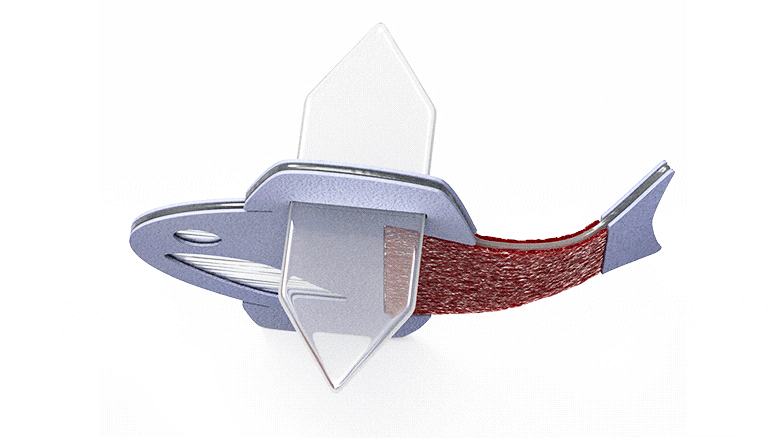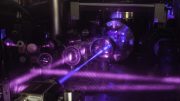Harvard University and Emory University recently collaborated to create the first biohybrid fish from human cardiac cells. This fully autonomous, artificial fish appears to swim, mimicking biophysical characteristics of a human heart.
The synthetic fish combines the shape and swimming motion of a zebrafish with stem cell-derived cardiomyocytes. While artificial muscle pumps have been researched in the past, this project is unique in that it uses two layers of muscle on either side of the tail fin. The opposing layers of muscle expand and contract in an alternating pattern. When placed in a solution of salt and glucose, one side of the fin stretches. This triggers the opening of a mechanosensitive protein channel, causing that side to subsequently contract. The two sides continue to expand and contract opposingly, creating a spontaneous swimming motion that can last for over 100 days.
Harvard and Emory’s research also included the development of an autonomous pacing node. This pacemaker-like device allows scientists to control the frequency and rhythm of the muscle contractions. Combined with the two layers of muscle on the fish’s fin, this synthetic fish is able to swim in continuous, autonomous, and coordinated movements.
Another interesting aspect of the biohybrid fish is that it improves with age. As the cardiomyocyte cells mature, they improve in muscle contraction and coordination, allowing the synthetic fish to reach higher speeds. In fact, the artificial fish eventually reached speeds and swimming efficacy comparable to a wild zebrafish.
Moving forward, the research team hopes to develop an artificial heart that can replace a malformed heart in infants. Approximately 1% of all babies are born with a heart defect and half of those are serious enough to require treatment. Current treatment involves open-heart surgery shortly after birth, which poses extra risks for premature babies and those with complex lesions.
Further, the heart can be permanently damaged after such surgeries, as it experiences a period of cold ischemia, or no blood flow, which can damage myocardial function. The heart’s function may also be depressed after surgery, causing additional problems such as arrhythmia, or irregular heartbeat. Thus, instead of performing open-heart surgery on infants, these researchers hope to develop a heart replacement for severe heart defects. To add on, this ‘fish’ will facilitate research on various heart diseases, such as arrhythmia, as it mimics the feedback mechanisms of muscular pumps like the heart. Heart research o-fish-ally just got much more advanced!






Be the first to comment on "Heart Research Advancement: Biohybrid Fish Made from Human Stem Cells"